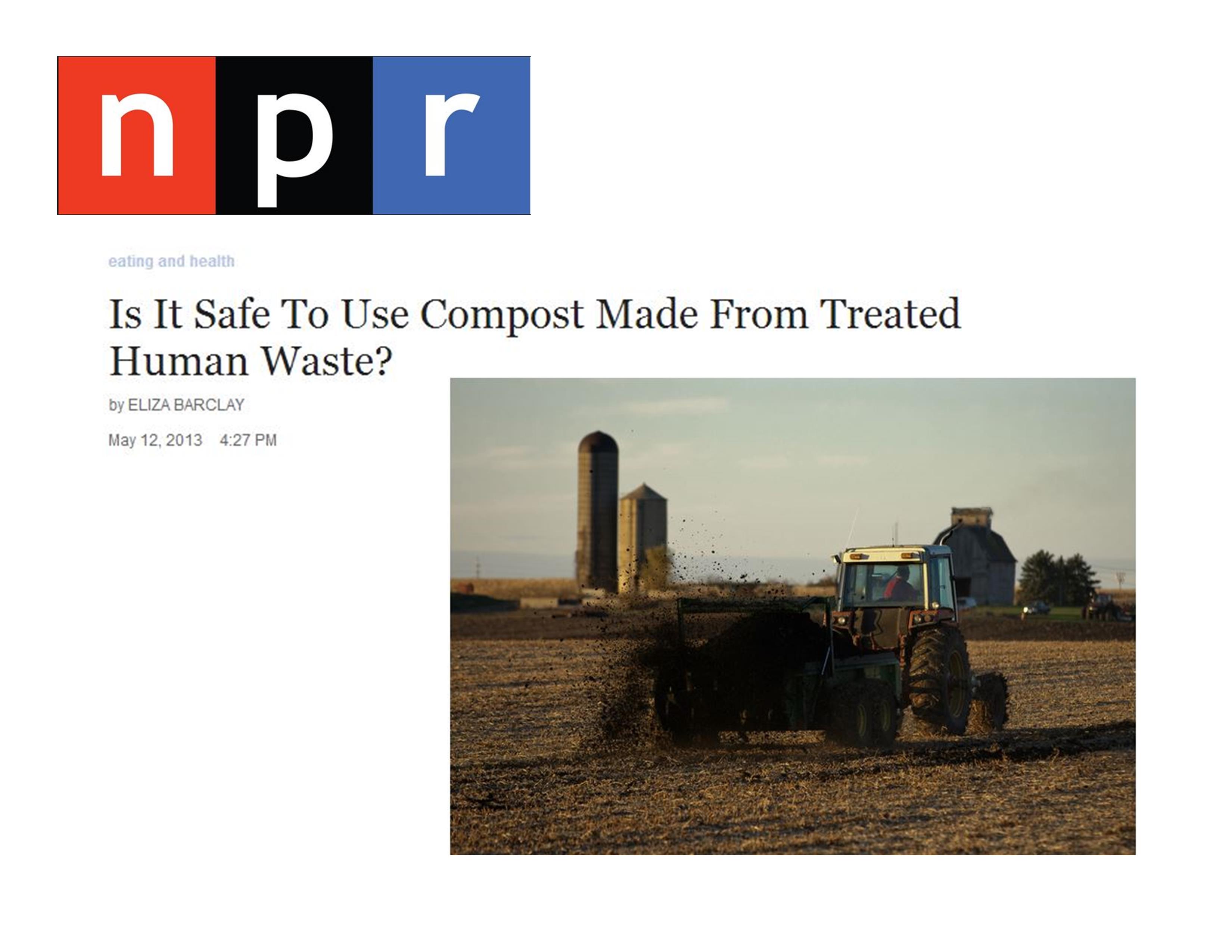General Pennsylvania, USA
http://www.npr.org/blogs/thesalt/2013...
and I wondered if anybody would be able to provide me with some further information. The article addresses the use of biosolids in urban gardening and agriculture. The Environmental Protection Agency defines biosolids as:
"nutrient-rich organic materials resulting from the treatment of sewage sludge (the name for the solid, semisolid or liquid untreated residue generated during the treatment of domestic sewage in a treatment facility)"
Given that there is no scientific evidence for a link between the use of biosolids and adverse health effects what exactly are activists claims against its use? I am unfamiliar with this and the article does not specify exactly what the "contaminants" of concern are - could anyone enlighten me? I would also be interested to read any of the original articles which explain why there is no risk to the environment. What research has been done so far?
Posted
by: Lindsay McMenemy
(4 points)
Posted: May 14, 2013
The big concerns are pathogens (bacteria, viruses, protozoa, helminths), heavy metals that remain in the biosolids after the basic stabilizing treatments, excess phosphorus loading, and nutrient imbalances.
Odor (not regulated) can be a serious problem in many jurisdictions. Public aversion to the origin of the product itself creates a monumental marketing/acceptance problem for the industry.
The issues around land application of bioslids are hugely complex, even regarding the fertilizer value of a particular biosolid product. Here's a good overview of the topic: http://bit.ly/17qRfEt
Posted
by: Peg Boyles
(4 points)
![]()
Posted: May 14, 2013
Thank you, that is exactly what I was looking for. Also a very informative article which filled in a few blanks from the NPR story. Namely the heavy metals and the low N:P ratio of biosolids that can potentially cause a loading of P in the soil. The issue of metals seems to be purely a matter of regulation but is it possible to balance the N by simultaneous addition of something with a HIGH N:P ratio? I also found the acceptable pathogen densities interesting for Class A. e.g. less than 1 viable helminth ova per 4 gram total solids. How do these values compare with, say, home produced compost containing manure? That classification would include plant parasitic nematodes also. Sorry, I'm thinking out loud here, some more interesting things for me to look up and share :) almost 11 years ago.
Posted
by: Susan League, UF/IFAS Sumter Program Assistant
(1 point)
![]()
Posted: May 14, 2013
Interesting, I didn't realize that there was such differences in treatment. Thanks almost 11 years ago.
Here's a link to a UF document with FAQs about reclaimed water that you might find interesting. http://edis.ifas.ufl.edu/ss544 almost 11 years ago.
Posted
by: J.D. Archer
(31 points)
![]()
Posted: May 14, 2013
Good points! (I think you meant to say that most industrial chemicals and pharmaceuticals--both human and veterinary--AREN'T removed or broken down during sewerage treatment.)
While drugs are a becoming a serious problem in drinking water, and some research shows that a few of them show up in biosolids, where plant roots may be able to absorb some of them, the research to date suggests that most pharmaceuticals and industrial chemicals flush out in the water fraction of the sewerage (which is how they end up as a drinking-water concern, since most folks get their water from surface-water sources.
And, depending on what drugs the animals received, you'll get similar problems in animal manures, even composted. almost 11 years ago.


0 Comments